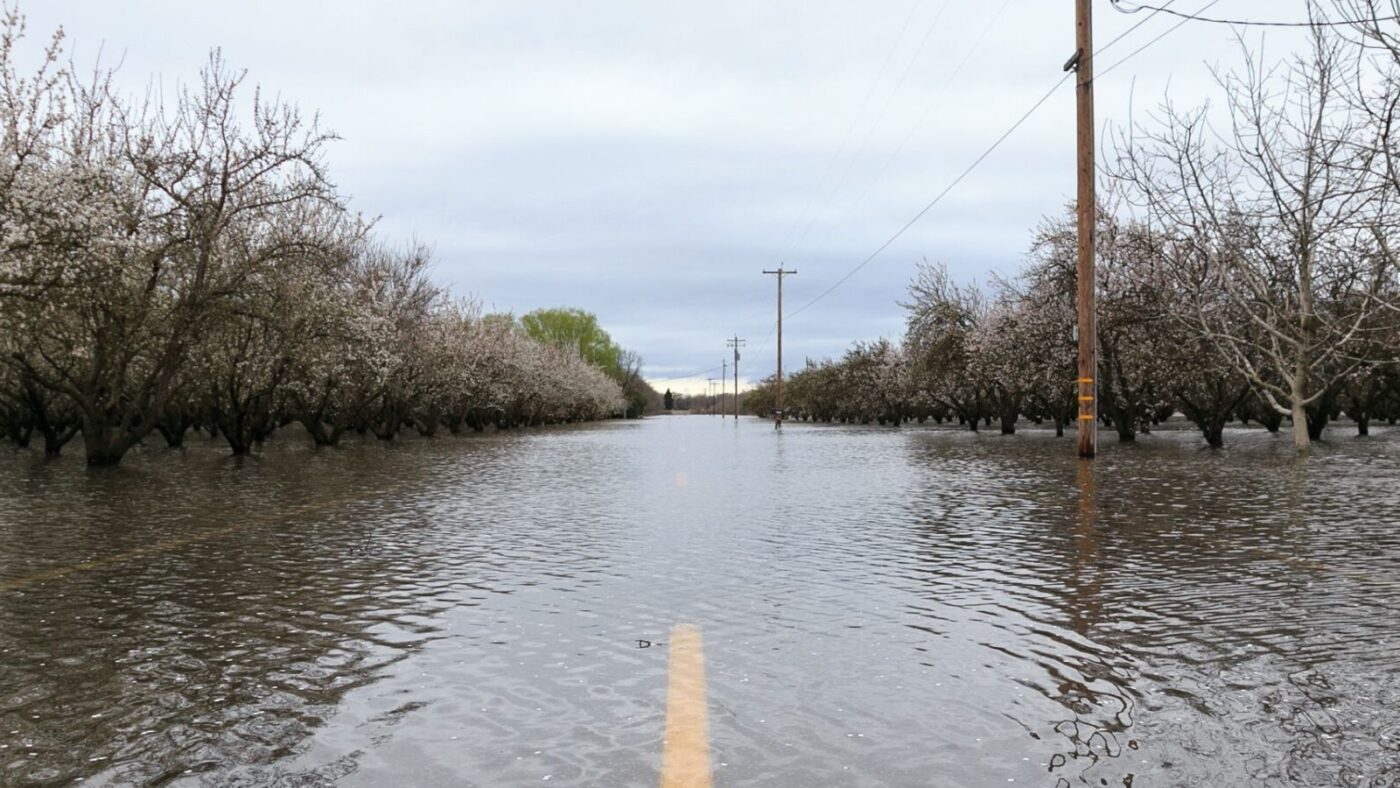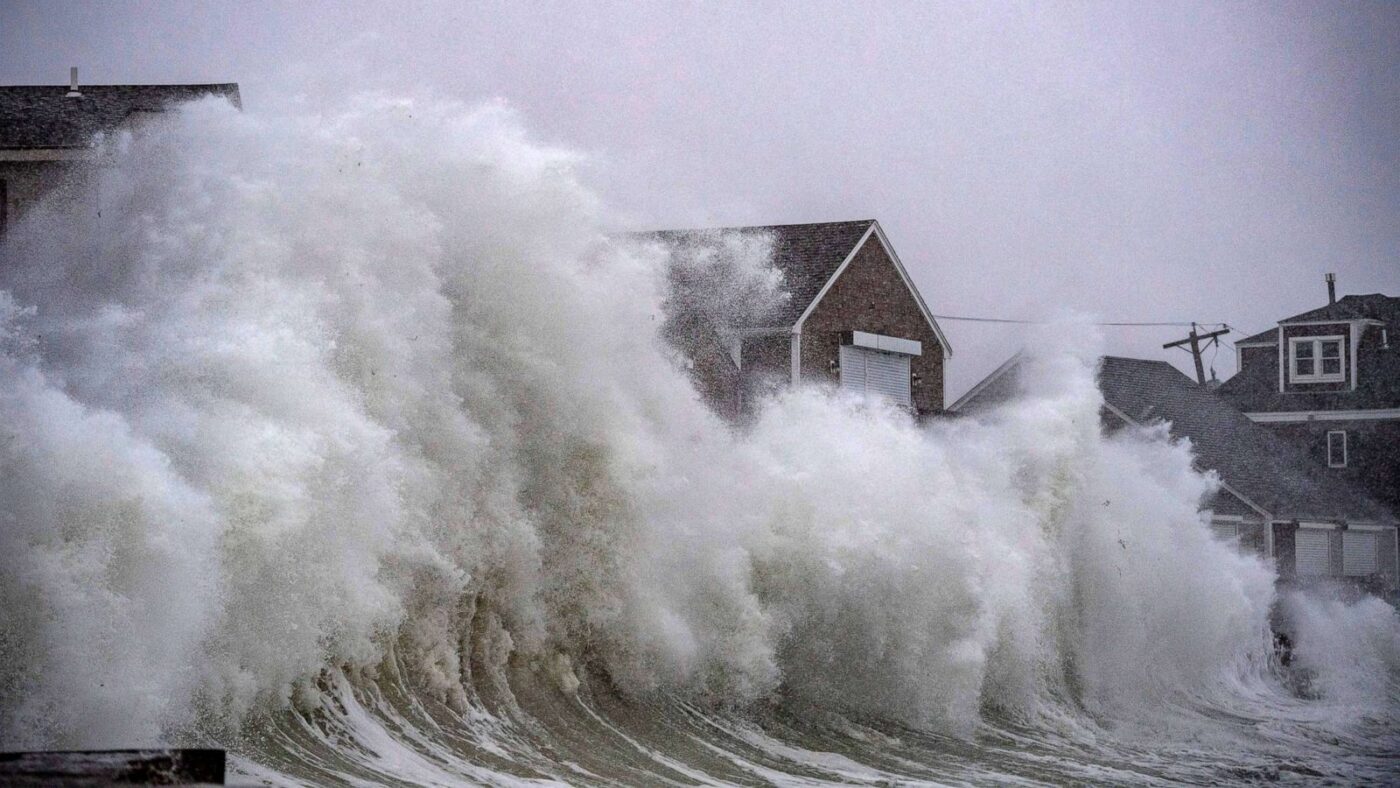
Click here for caption
Transcript: Hi, I’m flooding. I come in two different types: chronic events and acute events. Chronic events usually happen along the coast and along big bodies of water whereas acute events tend to happen along rivers and inland areas. There are many sources of flooding. A major rainstorm, hurricane, or snowstorm can cause acute flooding. With temperatures rising globally, more glaciers are melting, causing oceans to rise. And as ocean temperatures rise, the water itself expands. The impermeable surfaces in built environments can exacerbate flooding, because stormwater cannot be absorbed into the ground. When floods happen, buildings become submerged in standing water for prolonged periods of time, causing mold and destruction. Flooding harms our physical health because standing water causes mold, which is dangerous when inhaled, and standing water can also spread infectious diseases. Flooding can also be harmful to our mental health as it causes destruction of communities and displaces people out of their homes. In addition, it can cause disruption in care, food, housing, education, and employment. Historical injustices in our built environment, such as disinvestment of infrastructure have placed greater risk for flooding in some neighborhoods. Designers can help undo some of these injustices by carefully selecting materials and incorporating flood infrastructure for buildings at a higher risk.
Two types of flooding events:
Acute – River Flooding
Chronic – Coastal flooding


Definition
Coastal flooding occurs when water inundates or covers normally dry coastal land because of high or rising tides or storm surges. Riverine flooding is when streams and rivers exceed the capacity of their natural or constructed channels to accommodate water flow and water overflows the banks, spilling into adjacent low-lying, dry land.Human Health Mechanism
Flooding harms our physical health because standing water causes mold, which is dangerous when inhaled, and standing water can also spread infectious diseases. Flooding can also be harmful to our mental health as it causes destruction of communities and displaces people out of their homes.Indicator Measurement
The US Federal Emergency Management Agency (FEMA) calculates Flood Risk indices for both coastal and riverine flooding using similar methodologies. For coastal flooding, the National Risk Index calculates the number of people affected by multiplying the area of affected coastal land and the population density in that region. For riverine flooding, the National Risk Index calculates the number of people affected by multiplying the area of affected land around rivers and other non-coastal water bodies and the population density in that region.Source of Exposures
Related Health Outcomes & Exposures
Respiratory Diseases; Infectious Disease; Mental Illness (depression, anxiety, distress); Disruption in Care, Food, Housing, Education, Employment, and Social Network.References
Click here for References
- Coastal Flooding Data Source: Climate Mapping for Resilience and Adaptation (CRMA). US FEMA National Risk Index: Coastal Flooding. Data year 2021. Accessed April 2023. https://resilience.climate.gov/datasets/FEMA::national-risk-index-census-tracts/about
- Inland Flooding Data Source: US FEMA National Risk Index: Inland Flooding. Data year 2021. Accessed April 2023. https://resilience.climate.gov/datasets/FEMA::national-risk-index-census-tracts/about
- Du W, FitzGerald GJ, Clark M, Hou XY. Health impacts of floods. Prehosp Disaster Med. 2010;25(3):265-272. doi:10.1017/s1049023x00008141
- Evans J. Warming Seas and Melting Ice Sheets – NASA. nasa.gov. Published August 26, 2015. https://www.nasa.gov/science-research/earth-science/warming-seas-and-melting-ice-sheets/
- US FEMA. National Risk Index: Coastal Flooding. hazards.fema.gov. Accessed November 10, 2023. https://hazards.fema.gov/nri/coastal-flooding
- US FEMA. National Risk Index: Riverine Flooding. hazards.fema.gov. Accessed November 10, 2023. https://hazards.fema.gov/nri/riverine-flooding
